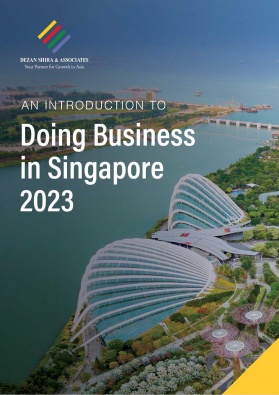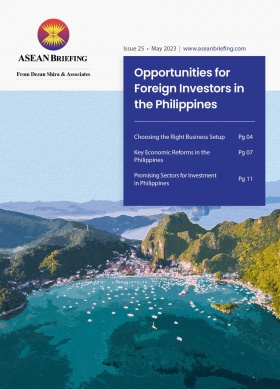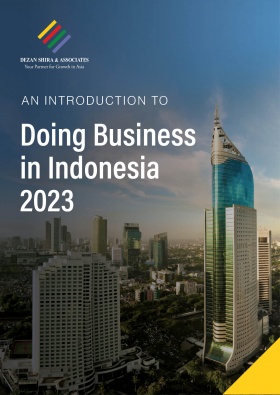Vietnam Bolsters Regional Financial Links through Connectivity Payment Initiative
Vietnam officially joined ASEAN’s Regional Payment Connectivity initiative, which aims to enhance cross-border payment systems in the region. The RPC initiative to boost cross-border payments was agreed to during the 2022 G20 Summit.
On August 25, 2023, Vietnam, through its central bank, the State Bank of Vietnam (SBV), officially joined the Regional Payment Connectivity (RPC) initiative. The RPC initiative was initiated by the central banks of Indonesia, Singapore, Thailand, Malaysia, and the Philippines during the G20 Summit in 2022 to develop and enhance inclusive cross-border payment systems in Southeast Asia, such as using QR-code payments.
The partnership aims to support the post-pandemic recovery of countries in the region with a specific aim to benefit micro, small, and medium-sized businesses (MSMEs). MSMEs are the dominant form of business enterprise in Southeast Asia, accounting for between 88 to 99 percent of all businesses as well as approximately 70 percent of total employment.
Regional Payment Connectivity Initiative can increase financial inclusion in Vietnam
The RPC initiative can help increase financial inclusion in Vietnam. Despite some 70 percent of the adult population owning a bank account, they are severely underbanked with more than half lacking access to credit.
Meanwhile, the ASEAN-5—Indonesia, Singapore, Thailand, Malaysia, and the Philippines—have inked agreements to link their QR code payment systems. This will enable, for example, Indonesian consumers to pay for goods or services in Thailand by scanning Thai QR codes. Thai consumers can also use their mobile applications to scan the Quick Response Code Indonesian Standard (QRIS) when buying products or services in Indonesia.
Further, the RPC initiative will help benefit Vietnam’s digital economy, which had a gross merchandise value (GMV) of US$23 billion in 2022. This is expected to increase to between US$120 billion to US$200 billion by 2030. E-commerce transactions are set to drive this growth which had a GMV of US$14 billion in 2022 and is predicted to reach US$32 billion by 2025.
As such, QR codes can encourage Vietnamese MSMEs to develop more cashless payment options, particularly since most MSMEs are in the informal sector—according to World Economics, Vietnam’s informal sector was valued at US$315 billion at GDP PPP levels.
Barriers to financial inclusion in Southeast Asia
Cash is king
As most Southeast Asian MSMEs are in the informal sector, they pay wages in cash, especially in rural and low-income communities. Without bank account records, many Southeast Asian MSME firms and their employees do not have credit histories, and this hinders their ability to access financial services, such as business loans or mortgages.
Financial literacy
Low levels of financial literacy are impacting the low adoption rate of financial services in Southeast Asia. Financial literacy is around 30 percent of the region’s adult population—lower than the global average.
The importance of mobile phones
More people in Southeast Asia have a mobile/cell phone than a bank account. The mobile phone is thus key to achieving financial inclusion in the region as it enables users to access mobile wallets, which are linked to QR codes.
Some of the most used digital wallets in Southeast Asia are GrabPay, GoPay, OVO, MoMo, and PayFazz. Through these digital wallets, consumers can conduct online transactions without having a bank account. Moreover, as more consumers and businesses use these digital wallets, more data gets generated around their financial behavior and consumer trends. Financial institutions will then be able to tailor the type of financial products offered to this demographic.
For foreign investors in the e-wallet industry, it is essential that they deliver a customer-centric experience to allow customers to pay with the local payment method of their choice, ranging from mobile banking to payments via convenience stores.
P2P lending
Many MSMEs in Southeast Asia have business models that are not compatible with the characteristics of the financial products offered by banks and other financial institutions. That includes aspects, such as payment terms for loan schemes, forms of collateral, and credit quality, among others.
Peer-to-peer (P2P) lending is one financing model that has the potential to serve the region’s underbanked and unbanked population. In Indonesia for instance, there are already over 160 officially registered fintech companies that offer P2P lending services, which was valued at over US$7 billion in 2020. These microloans are becoming increasingly popular as they take a short time to be disbursed (less than 24 hours), with the amount usually being less than US$100. Furthermore, the terms and maturity of the loans are also small and short, being repaid within a few weeks.
About Us
ASEAN Briefing is produced by Dezan Shira & Associates. The firm assists foreign investors throughout Asia and maintains offices throughout ASEAN, including in Singapore, Hanoi, Ho Chi Minh City, and Da Nang in Vietnam, in addition to Jakarta, in Indonesia. We also have partner firms in Malaysia, the Philippines, and Thailand as well as our practices in China and India. Please contact us at asean@dezshira.com or visit our website at www.dezshira.com.
- Previous Article Investing in Indonesia’s Nongsa Special Economic Zone
- Next Article Audit and Compliance in Thailand: A Guide for Foreign Investors







